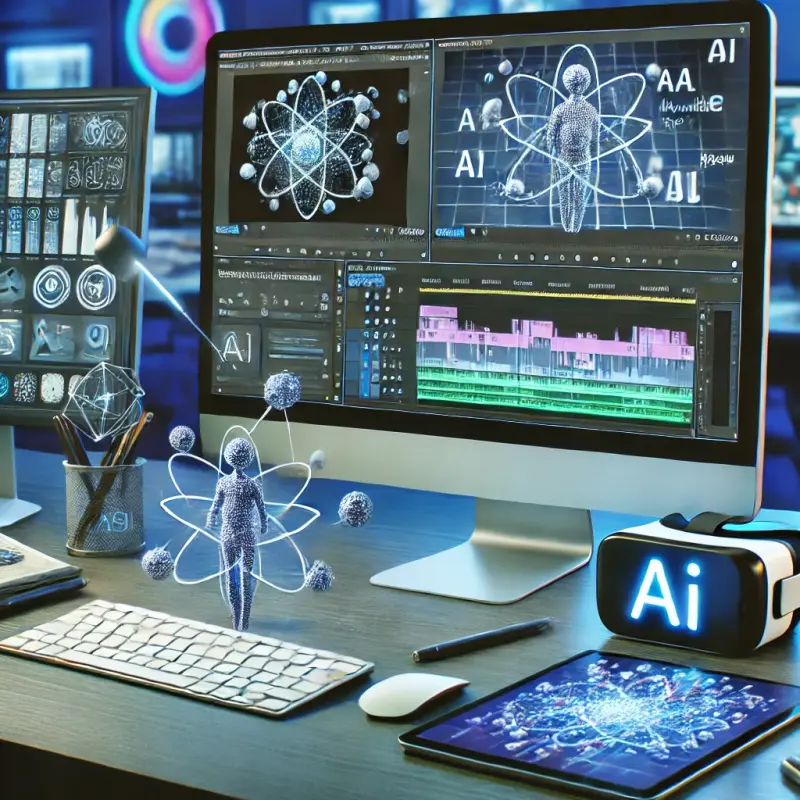Artificial Intelligence in Educational Video Content Creation: How Algorithms Simplify the Process
In recent years, artificial intelligence (AI) has made significant strides in transforming industries across the board, and one of the most notable areas where AI is creating waves is in the field of content creation. Specifically, AI-powered tools and algorithms have begun to play a critical role in the creation of educational videos, significantly streamlining processes that were once time-consuming and resource-heavy. From automating video editing to generating text-based content and improving engagement, AI is helping educators, content creators, and organizations produce high-quality educational videos with greater efficiency and less manual intervention.
The Rise of AI in Education
The application of AI in education is not a new concept. Over the past decade, AI technologies such as machine learning, natural language processing (NLP), and computer vision have steadily entered the educational space, helping to personalize learning, create adaptive learning environments, and offer more dynamic teaching methods. However, AI’s role in video content creation is a relatively newer development, but its impact is already transformative.
Educational videos are one of the most effective ways to convey complex concepts, engage students, and create interactive learning environments. Videos allow for a combination of visual, auditory, and textual elements, catering to a variety of learning styles. Yet, the process of creating high-quality educational videos often involves a range of time-consuming tasks such as scripting, editing, voiceover recording, and visual content creation. These tasks can be overwhelming, especially for educators and content creators who have limited resources or experience in video production.
This is where AI comes in. With its ability to automate a range of creative tasks, AI is making the process of creating educational videos faster, more cost-effective, and more accessible for a wide array of users.
Automating the Scriptwriting Process
One of the most challenging aspects of creating educational videos is writing a clear and engaging script. The script serves as the foundation for the video, guiding the flow of information and helping to ensure that the content is coherent and easy to follow. Traditionally, scriptwriting is a time-intensive process, requiring subject-matter expertise, creativity, and careful attention to detail. For many educators, especially those who are not professional content creators, the task of scripting can be a daunting one.
AI-powered writing tools are now making this process much easier. Advanced algorithms, powered by natural language generation (NLG), can generate high-quality, informative scripts based on a set of keywords or input topics. For example, an educator could input a specific subject, such as "Photosynthesis in plants," and AI could generate a comprehensive, well-structured script outlining the key concepts in an easy-to-understand format. These tools not only save time but also help ensure that the content is clear, concise, and aligned with best practices in educational communication.
Furthermore, AI tools can assist in adapting existing content for different learning levels. For instance, a script initially created for high school students can be adjusted to suit younger audiences or even advanced learners, depending on the input parameters set by the creator. This flexibility is invaluable for those who aim to produce content for diverse educational contexts.
Video Editing and Production Made Easier
Once the script is in place, the next challenge in creating educational videos is the video production itself. This phase involves selecting the right footage, images, animations, sound effects, and music, as well as editing the content to ensure smooth transitions, clear visuals, and effective pacing. Traditionally, this stage requires skilled video editors and specialized software, both of which can be expensive and time-consuming.
AI has made tremendous advancements in automating video editing, making it accessible to people with little to no experience in video production. Today, AI tools can automatically analyze video footage, recognize key moments, and generate edits that make the video flow smoothly. For example, AI can detect when a speaker stumbles over words or when a visual element is off-screen and automatically adjust the video to correct these issues.
Additionally, AI algorithms can help to create visually engaging content by suggesting relevant images, animations, and video clips that complement the script. Some AI tools even provide automatic voiceovers, allowing educators to quickly produce professional-quality audio narration. With AI handling many of the time-consuming aspects of editing, content creators can focus more on the creative side of video production.
Personalized Content Delivery
One of the most powerful ways that AI is enhancing educational videos is through personalized content delivery. AI-driven platforms can analyze viewer behavior and preferences to recommend specific videos or customize content for individual learners. For example, a learner who struggles with certain topics may receive personalized recommendations for videos that explain the material in a different way, or offer additional practice exercises. Similarly, AI can track a learner’s progress and suggest videos that build upon their knowledge and help them progress through a learning module.
Moreover, AI enables educators to gather data about how their videos are being consumed. They can monitor which sections of the video engage students the most, where they lose interest, and how effectively the content is being absorbed. This data can be used to improve future video content, tailoring it more closely to the needs of the audience and maximizing the impact of each video.
In this way, AI not only enhances the content creation process but also contributes to a more dynamic and responsive educational environment.
Conclusion
Artificial intelligence is revolutionizing the world of educational video content creation. From simplifying scriptwriting to automating video editing and enhancing personalized delivery, AI-powered tools are helping educators and content creators streamline the production process and engage audiences more effectively. These advancements not only make video creation more efficient but also open up new possibilities for creating diverse, high-quality educational content at scale. As AI technologies continue to evolve, the future of educational video content promises to be even more innovative, efficient, and personalized, offering learners and educators new ways to connect, learn, and grow.
